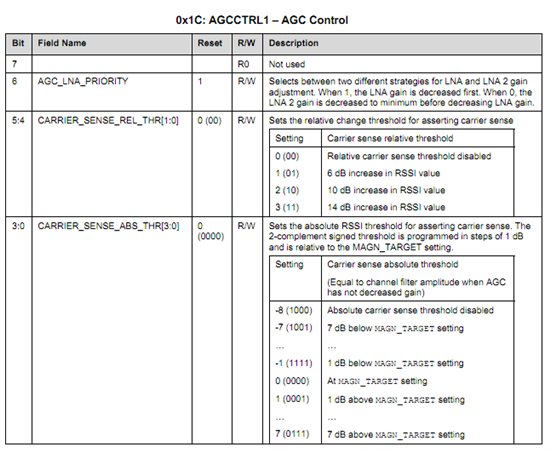Hello,
I am working with a medical sensor that transmits some data every five
minutes. I know some specs on the transmission based on FCC information
and other published material. (OOK, 8192 bits/sec, 300khz bandwidth,
76 bits in the packet, 5 ASCII Char Transmitter ID, 402.142mhz). The
problem is the format of the transmission. I have a radio (being a ham) that can RX on that freq, and tried using
my soundcard as a spectrum analyzer to record the signal for manual
decoding into binary. I am pretty sure the sound card is not fast
enough to get a sample to use. Also, with the transmission being only
9ms long, it's hard to catch it completely. 9ms transmission @ 8192 bits is a shade less then < 80 bits.
So the packet structure could look like this:
0xAA 0x?? 0x30 0x43 0x54 0x41 0x33 0x?? 0xYY
Preamble Sync |-------------Transmitter ID------------| Data CRC
Assuming
the documentation is right, 76 bits = 9ms @ 8192 bits/sec. 72 bits
with a nibble left over? Maybe the preamble is longer?
I am looking at (GDO0) to see if I ahve recieved anything, and it never goes to to 1.
I am using the CC1101 chip with an Arduino board to try and get the raw data of the transmission. Here are my registry settings:
SpiWriteReg(CC1101_FSCTRL1, 0x0F); SpiWriteReg(CC1101_FSCTRL0, 0x00); SpiWriteReg(CC1101_FREQ2, 0x0F); SpiWriteReg(CC1101_FREQ1, 0x77); SpiWriteReg(CC1101_FREQ0, 0x8D); SpiWriteReg(CC1101_MDMCFG4, 0x58); SpiWriteReg(CC1101_MDMCFG3, 0x4A); SpiWriteReg(CC1101_MDMCFG2, 0x32); SpiWriteReg(CC1101_MDMCFG1, 0x22); SpiWriteReg(CC1101_MDMCFG0, 0xF8); SpiWriteReg(CC1101_CHANNR, 0x00); SpiWriteReg(CC1101_DEVIATN, 0x47); SpiWriteReg(CC1101_FREND1, 0x56); SpiWriteReg(CC1101_FREND0, 0x11); SpiWriteReg(CC1101_MCSM0 , 0x04); SpiWriteReg(CC1101_FOCCFG, 0x36); SpiWriteReg(CC1101_BSCFG, 0x6C); SpiWriteReg(CC1101_AGCCTRL2, 0x03); SpiWriteReg(CC1101_AGCCTRL1, 0x40); SpiWriteReg(CC1101_AGCCTRL0, 0x91); SpiWriteReg(CC1101_FSCAL3, 0xE9); SpiWriteReg(CC1101_FSCAL2, 0x2A); SpiWriteReg(CC1101_FSCAL1, 0x00); SpiWriteReg(CC1101_FSCAL0, 0x1F); SpiWriteReg(CC1101_FSTEST, 0x59); SpiWriteReg(CC1101_TEST2, 0x88); SpiWriteReg(CC1101_TEST1, 0x38); SpiWriteReg(CC1101_TEST0, 0x0B); SpiWriteReg(CC1101_IOCFG2, 0x29); SpiWriteReg(CC1101_IOCFG0, 0x3F); SpiWriteReg(CC1101_PKTCTRL1, 0x04); SpiWriteReg(CC1101_PKTCTRL0, 0x45); SpiWriteReg(CC1101_ADDR, 0x00); SpiWriteReg(CC1101_PKTLEN, 0x3D);
Any suggestions or help would be great. I have attached my PDE and libraries.


